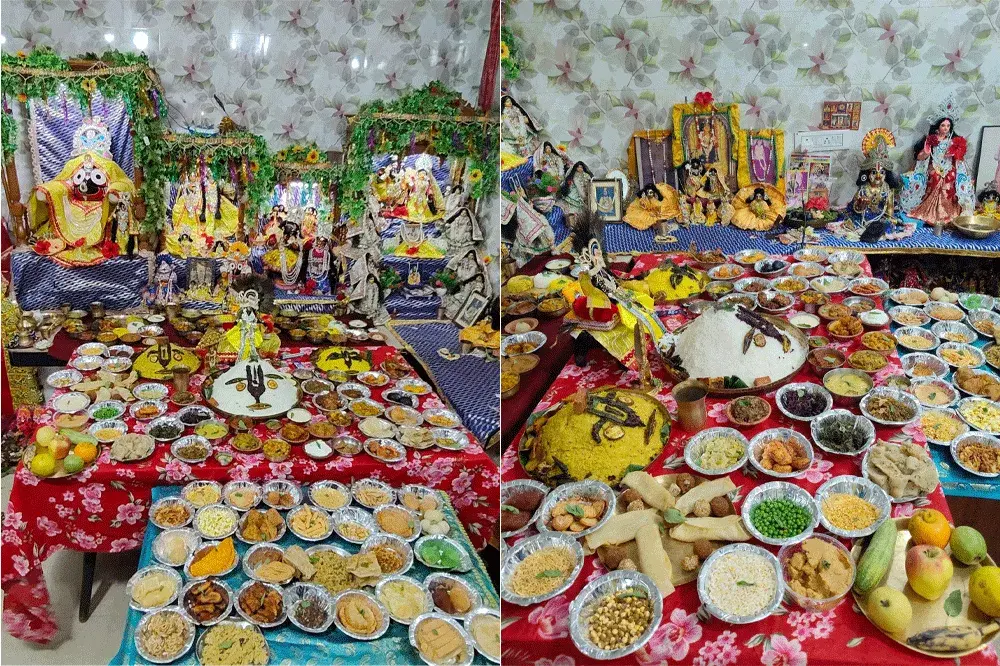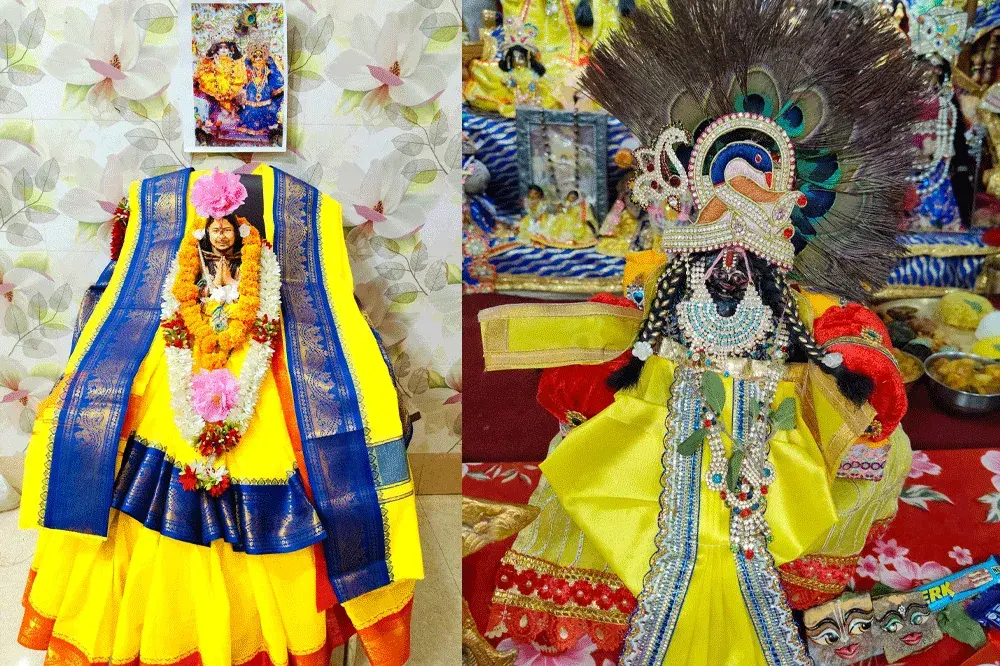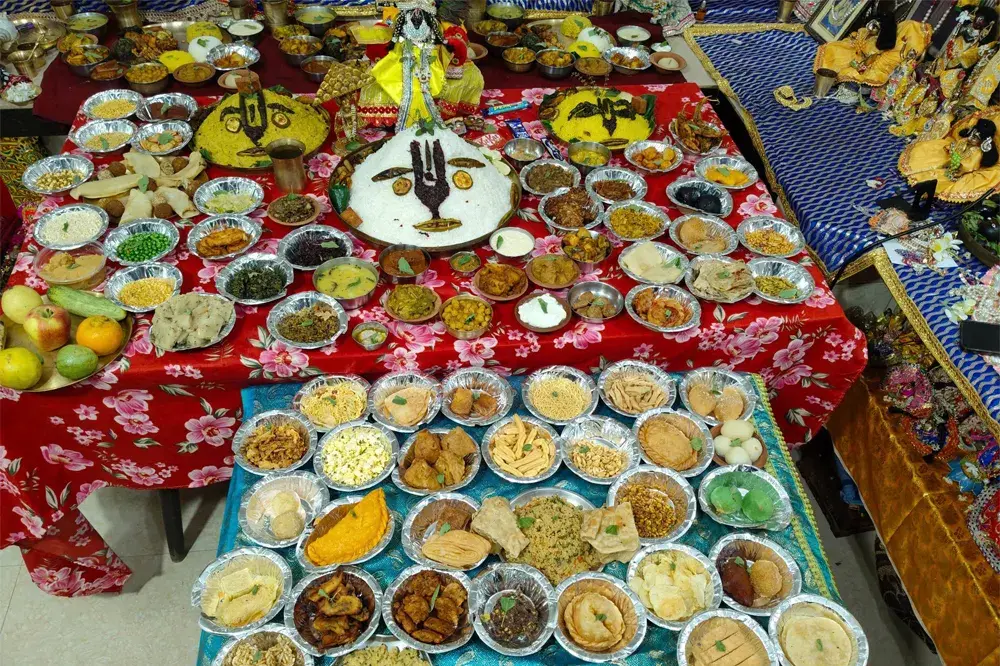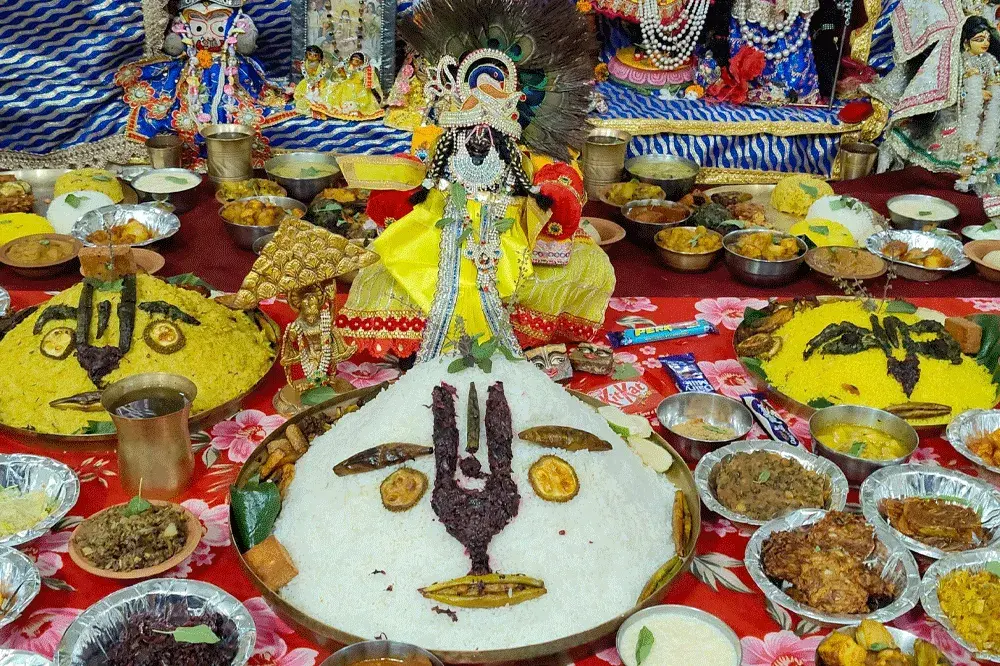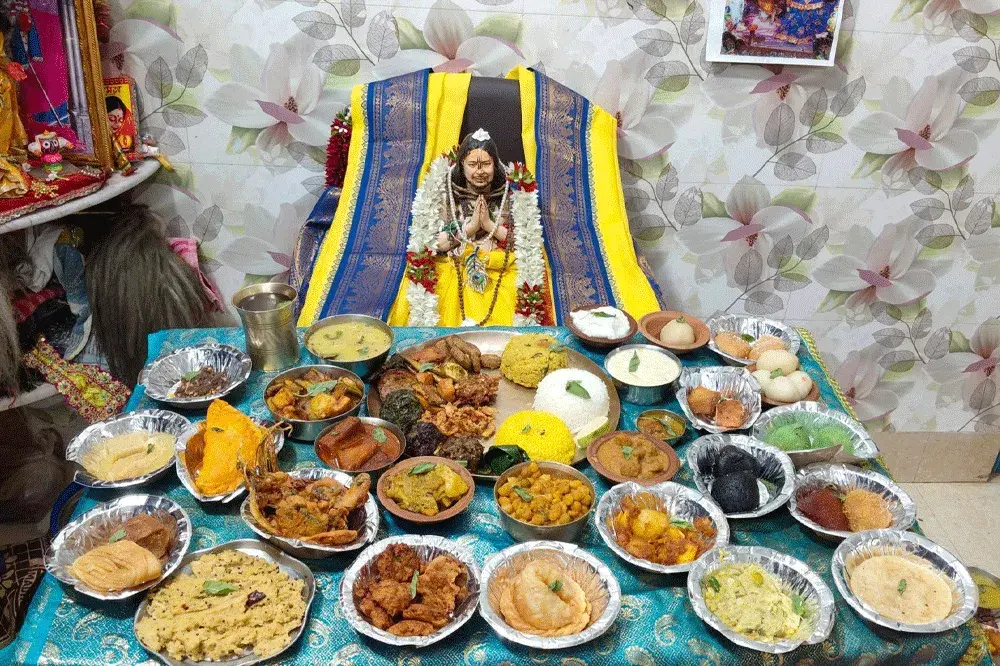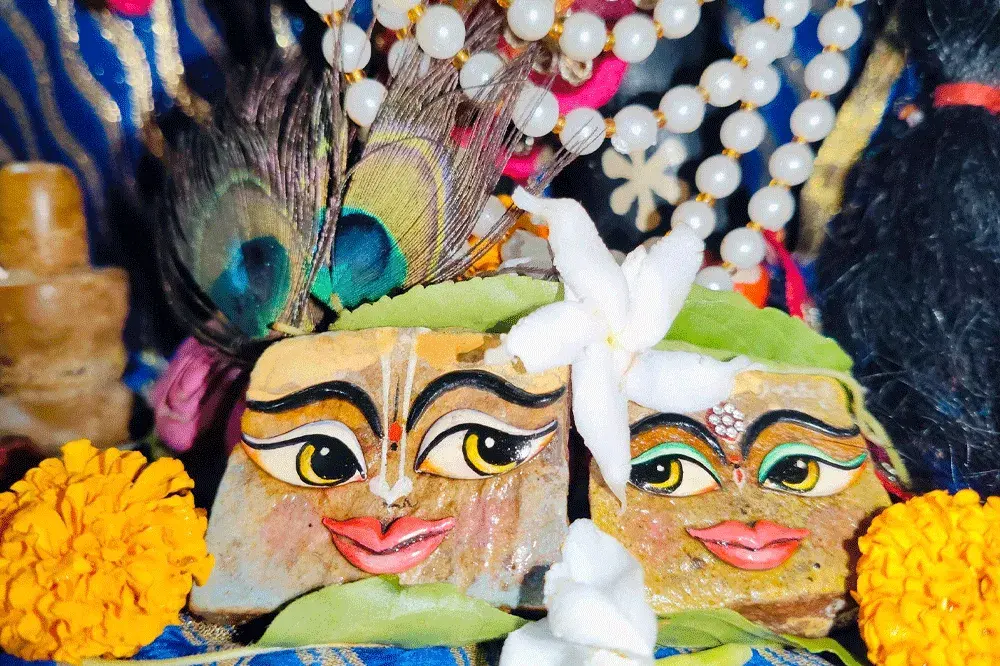Radhashtami, also known as Radha Ashtami or Radha Jayanti, is a significant Hindu festival celebrating the birth anniversary of Srimati Radharani, the beloved eternal consort of Lord Krishna. She is revered as the epitome of divine love, devotion, and the internal pleasure potency (Hladini Shakti) of Lord Krishna.
Significance:
- Divine Love and Devotion: Radhashtami emphasizes the profound and selfless love of Radha for Krishna. Her devotion is considered the highest form of bhakti (devotion), where the devotee completely surrenders to the Divine.
- Fulfilling Krishna’s Pleasure: Radha is seen as the one who brings immense joy to Krishna. Worshipping her is believed to be the surest way to please Lord Krishna and attain His blessings.
- Spiritual Liberation: It is believed that observing Radhashtami with sincerity and devotion can help devotees purify their hearts, overcome sins, and progress on their spiritual journey towards liberation and divine love.
- Incarnation of Lakshmi: In many traditions, Radha is considered an incarnation of Goddess Lakshmi, the goddess of wealth and prosperity, signifying that devotion to Radha brings all forms of auspiciousness.
Celebrations and Rituals: Radhashtami is celebrated with great fervor, especially in the Braj region (Vrindavan, Barsana, Mathura) where Radha and Krishna performed their divine pastimes.
- Fasting: Many devotees observe a fast on this day, often a half-day fast until noon, which is then broken with prasad (sanctified food). Some dedicated devotees observe a full-day fast, even abstaining from water. The fast is not just about abstaining from food but about focusing the mind on the divine.
- Temple Decorations: Temples, particularly those dedicated to Radha and Krishna, are beautifully adorned with flowers, lights, and colorful decorations.
- Abhishekam: A grand Abhishekam (sacred bathing) of Radha Rani’s idol is performed. This involves bathing the deity with Panchamrit (a mixture of milk, yogurt, ghee, honey, and sugar), fruit juices, and various other auspicious liquids.
- Dressing and Adornment: After the Abhishekam, the deity of Radha is dressed in new, exquisite garments, adorned with jewelry and fragrant flower garlands. It is said that Radha Rani has a special fondness for blue, and sometimes she is dressed in blue-colored clothing.
- Prayers and Chanting: Devotees engage in continuous chanting of devotional mantras, especially the Hare Krishna Mahamantra and the Radha Gayatri Mantra. Bhajans (devotional songs) and kirtans (congregational chanting) are performed, creating a vibrant and spiritual atmosphere.
- Aarti and Offerings: Aarti (a ritual of offering light with lamps) is performed, and various food items, particularly those dear to Radha and Krishna, are offered as bhog (sacred offering). These offerings are then distributed as prasad to all devotees.
- Rasa Leela: In some regions, especially in Braj, Rasa Leela performances, which are dramatic reenactments of Radha and Krishna’s divine pastimes, are organized.
- Processions: Joyous processions carrying deities of Radha and Krishna on beautifully decorated palanquins or chariots are often taken out, accompanied by singing and dancing.
- Charity: Performing acts of charity, such as feeding the needy or helping the less fortunate, is considered highly meritorious on Radhashtami.
Radhashtami is a day of immense spiritual significance, reminding devotees of the pure and transcendental love between the individual soul and the Supreme Lord, as personified by Radha and Krishna.





